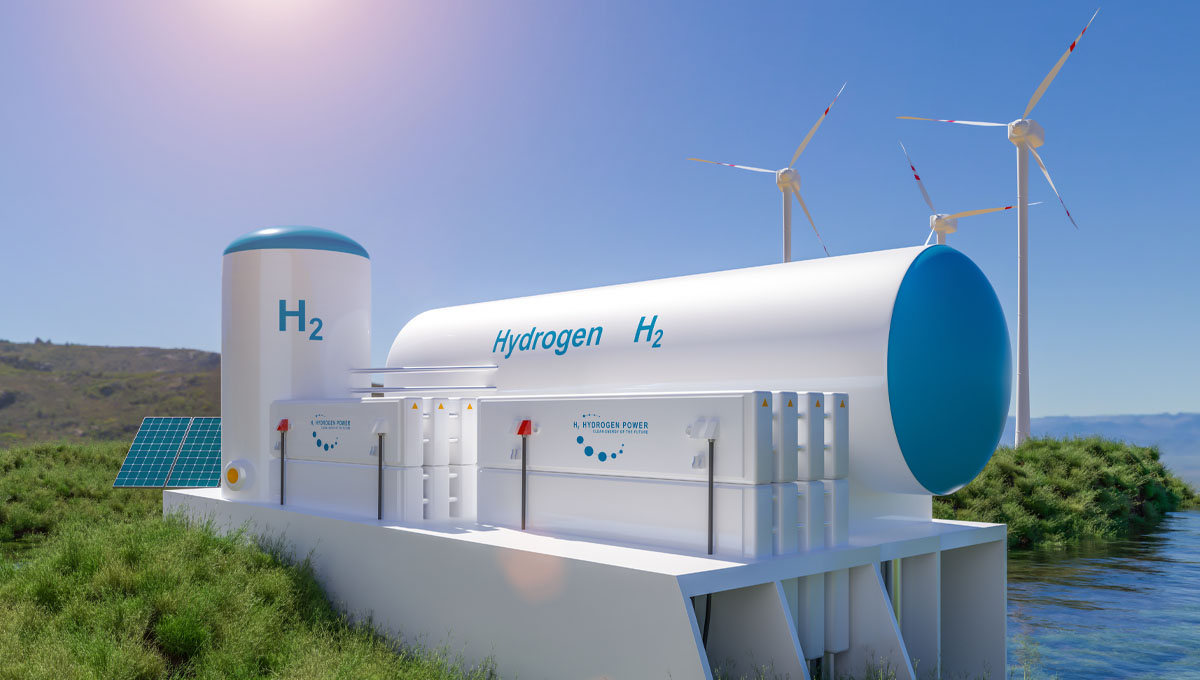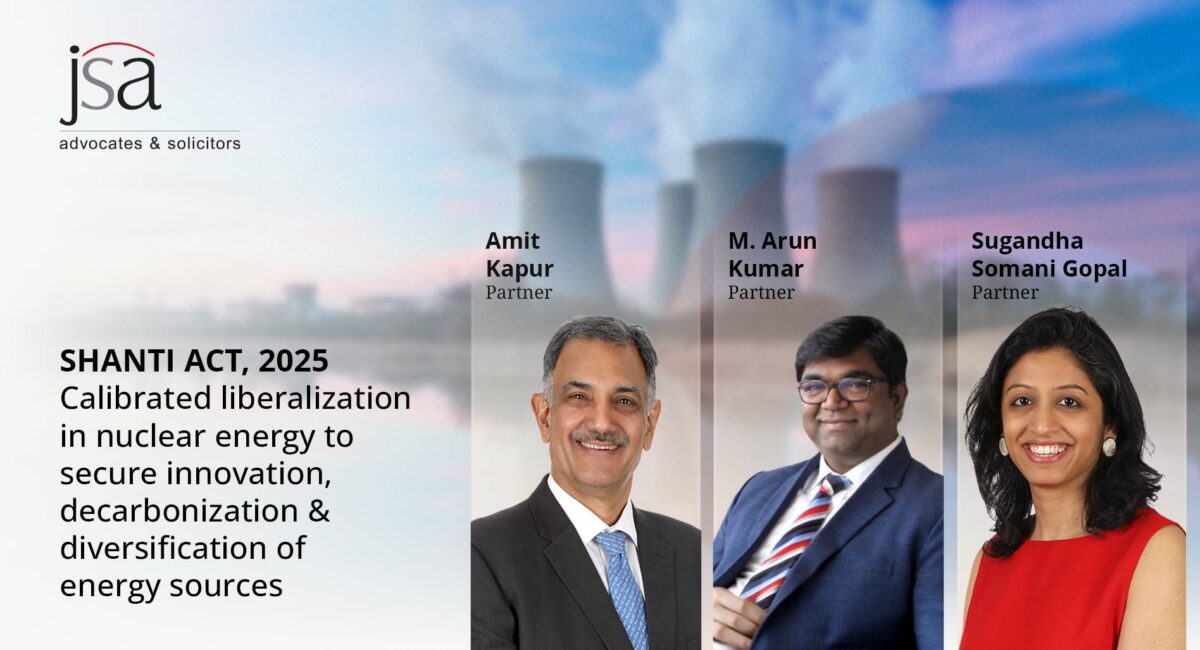Please click here to download the Prism as PDF.
Green Hydrogen standard for India
With the aim of advancing the National Green Hydrogen Mission, the Ministry of New and Renewable Energy (“MNRE”), vide an office memorandum dated August 18, 2023, introduced the ‘Green Hydrogen Standards for India’ (“Standards”). The Standards delineate specific emission thresholds that must be satisfied to categorize hydrogen production as ‘Green’, signifying its sourcing from renewable energy (“RE”), including from energy storage system or banked RE (“Green Hydrogen”). The ambit of this definition encompasses both electrolysis-based and biomass-based methods of hydrogen production.
In the case of Green Hydrogen derived from electrolysis, the cumulative non-biogenic greenhouse gas emissions resulting from water treatment, electrolysis, gas purification, drying, and hydrogen compression must not exceed an average of 2 (two) kilograms of carbon dioxide equivalent per kilogram of hydrogen over a 12 (twelve) month period. Similarly, for Green Hydrogen produced via biomass conversion, the aggregate non-biogenic greenhouse gas emissions stemming from biomass processing, heat/steam generation, biomass-to-hydrogen conversion, gas purification, and drying, as well as hydrogen compression, must remain below an average of 2 (two) kilograms of carbon dioxide equivalent per kilogram of hydrogen over a 12 (twelve) month period.
Further, the office memorandum stipulates that:
- a comprehensive methodology for quantification, reporting, monitoring, on-site validation, and certification of Green Hydrogen and its derivatives will be specified by the MNRE.
- the Bureau of Energy Efficiency will be the nodal authority for accrediting agencies involved in overseeing the monitoring, verification, and certification of Green Hydrogen production projects.
With this notification, India has become one of the few countries in the world to announce the definition of green hydrogen. Notably, the Indian Standard is not only at par with global standards but in some cases also more stringent than standards prescribed by the developed countries. In this context, we may look at the standards established by prominent jurisdictions such as the European Union (“EU”), United States of America (“U.S.”) and the United Kingdom (“UK”).
In U.S., as per the Clean Hydrogen Production Standard proposal, “clean hydrogen” is defined as hydrogen generated with a carbon intensity not exceeding 2 (two) kilograms of carbon dioxide-equivalent emitted at the production site per kilogram of hydrogen produced. Although, for the purpose of tax incentives under the Inflation Reduction Act of 2022, “qualified clean hydrogen,” refers to hydrogen with a lifecycle greenhouse gas emissions rate no higher than 4 (four) kilograms of carbon dioxide-equivalent emitted at the production site per kilogram of hydrogen.
In the EU, a much more liberal definition of green hydrogen has been adopted. The European Commission has set the fossil benchmark at 94 (ninety four) g carbon dioxide-equivalent per megajoule. For hydrogen, this translates to 3.38 (three point three eight) tonne of carbon dioxide equivalent emissions at the production site per tonne of hydrogen produced. Notably, hydrogen and hydrogen-based fuels exceeding this limit are not automatically excluded as renewable fuels, yet they cannot contribute to the renewable energy targets of member States.
In the UK, to demonstrate compliance with the low carbon hydrogen standard, producers of low carbon hydrogen must be able to report a green-house gas emissions intensity of 20 (twenty) carbon dioxide equivalents per megajoule of produced hydrogen or less, which is equivalent to 2.4 (two point four) kilograms of carbon dioxide-equivalent emissions at the production site per kilogram of hydrogen produced.
A review of the above shows that relative to other jurisdictions, India has established a more rigorous benchmark in delineating ‘Green Hydrogen’. A more stringent Standard is not only laudable but will also contribute more towards achieving India’s Intended Nationally Determined Contribution
With escalating global commitment to attain net zero emissions, an increasing number of countries are exploring low-carbon or green hydrogen as a tool to decarbonise their respective markets. In this scenario, as the international market witnesses the formulation of specific standards governing production of green hydrogen, a particularly intriguing avenue comes to light: the reception of these standards by nations, which heavily rely on hydrogen imports, such as Singapore. Further, the escalation in hydrogen production and its subsequent amplification in global trade is poised to exert a substantial influence on the international carbon credit trading market. The implications of the formulation of hydrogen production standards on the dynamics of the carbon credit trading market pique a noteworthy avenue of exploration.
This Prism has been prepared by:
|
|
Sugandha Somani |
|
For more details, please contact [email protected]
















